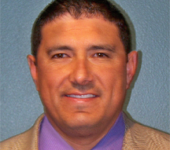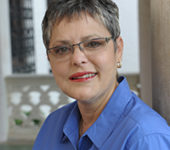• IDRA Newsletter • May 2011 •




East Central High School is a large suburban high school with 2,700 students. In the last 10 years, the school has seen a demographic shift to become majority minority with Hispanic students, White students and African American students. The student population also is about 65 percent economically disadvantaged.
On Creating a College-Going Culture: First, we realized that we had to build some serious relationships with higher education entities and with our community. We needed to be educated by higher education systems on the way they are run and their expectations of us. At the same time, we had to establish really effective lines of communication with our community so that they too could become aware of the expectations and opportunities for students and about our faculty.
We were fortunate to receive a grant from the Bill and Melinda Gates Foundation seven years ago that allowed us to bring in an Early College High School program and a partnership with the University of Texas at San Antonio (UTSA). The university gave us a liaison, which was of course you, Dr. Avilés, the director of the program. Now, we are building the capacity to expand those opportunities for all of our students. We are going beyond just a small cohort of 400 students to all of the 2,700. We’re still learning with a lot of trial and error, but we are persistent.
On Promoting College Readiness: We certainly needed to become aware of what college readiness means, and things like the word rigor and the phrase high expectations. These have been thrown around in education, but we all have different understandings of what they mean. So, as a staff, we’ve tried to get to a point where we share a common frame of reference for what we mean in our organization relative to college readiness, what academic rigor is and what it is not, and what high academic expectations are and what they are not. More often than not, in education in general, the definitions have been exclusionary, punishing, deficit thinking. We began to build a common understanding of what it means to be academically rigorous and what our students need to be prepared for, academically, in terms of content and habits of mind.
We’ve done this collaboratively. Richard DuFour’s work has been a big influence on us. Michael Schmoker’s work helped us organize ourselves to be collaborative. We built capacity from within in that way. For example, two teachers worked together to talk openly and honestly about the impact of their decisions relative to curriculum, instruction, assessment and student outcomes. They looked at whether they were really getting the intended outcomes and what decisions they were making in terms of instruction, curriculum and assessment was inhibiting their students from reaching those outcomes. It’s a professional learning community, definitely, that is required in order to move forward in this work.
On Involving Parents and Community: Certainly communication is huge. We learned from our partnership with UTSA that you have to have regularly scheduled evening meetings where you invite parents with their kids to come to school to talk about upcoming events and deadlines, explain what we are doing and why, and answer any questions they may have. There are many misconceptions out there and, if you rely on the grapevine, you’re going to have a lot of misinformation. Ultimately it’s our system that is not effectively communicating when that happens.
We also realized that the way schools have been organized, including ours, is such that when parents come to the school, they don’t always feel welcome. It is somewhat like a prison because of the required safety considerations. Parents don’t feel like they have open access to our system and feel like they can’t be partners in the process. So we’ve tried to address that in our security measures and climate to make sure we are giving access and that parents know that they are partners in the process.
On Listening: We resisted meaningful conversations with parents in the past because we worried that they were going to be upset or question us or not agree with things we were doing. But, in reality, we have found that parents have a lot of insight and are way more supportive than we thought and are more willing to partner. Parents actually have a burning desire to partner on behalf of education, regardless of their economic status and ethnicity. It doesn’t matter. They all want the best for their kids. They want to do whatever they can to help the school provide that for their kids. We have learned many positive lessons from doing it that way.
On Meeting the Demands of the 21st Century: Yes, that’s a hot topic. Everybody understands we need to prepare kids for the 21st Century and, again, there are a lot of different opinions about what this means. The first thing people think about in 21st Century readiness is technology. And we do need to bring technology into the reality as a habit of mind. But another habit of mind is that students have always needed to be career ready, college ready, society ready. Tony Wagner called it “jury ready.” I love that description. You know the idea to read and to write and to communicate orally critically, and in doing so to collaboratively work with a wide range of different personalities and to begin developing those kinds of characteristics as a learner and as a person. Those should be our standards.
At our school, we are having discussions about how we should be using our curriculum as the content to teach students these habits of mind. These 21st Century skills – of critical reading, critical writing and the ability to communicate orally, to take a position based on many different pieces of literature and stimulate that into your point of view, and to use that to support your point of view or position, individual writing or collaborative work – those should be the standards for measuring. But we use our content and our curriculum as the context to do that.
But education often has it the opposite way. We are so stuck on the content being our standard that we lose sight of these critical thinking skills that students need. And we wonder why, when they have high GPAs, they can’t go to college and 47 percent are not ready. That can be true for even the highest achieving high school students because we are teaching the wrong thing. We are focusing on the wrong thing.
On Supporting Teachers, Administrators and Staff: It’s ongoing professional development. It takes awareness, absolutely. When they are given the opportunity to become aware, educators are open to other possibilities. They really are. They want to do a great job. But they only have a limited frame of reference based on their experiences. If you provide them with other possibilities, other ideas or other resources, they’ll adopt them into their practice and their belief systems. So definitely, ongoing professional development, ongoing professional support.
On Seeing Outcomes for Traditionally Underserved Students: There has always been a pervasive belief in our school systems – like in all public education systems – that our responsibility is to provide students the “opportunity to learn.” We are going to provide the information you need, but you need to do your part. It’s up to you to essentially learn it. We’re going to cover it, we’re going to present it, we’re going to give you the opportunity, but you have to learn.
The reality is that lots of kids are left behind, especially those who are underserved, who didn’t have parents to advocate for them, who didn’t advocate for themselves, who didn’t understand school systems and what they should be providing those students. So our early college partnership allowed us to target a group of underserved students. Over a four-year period, the initial cohort actually achieved on standardized test scores and college assessments as well as or better than our highest achieving students on campus. So that gave everybody an “a-ha” realization that students can achieve when given access to high quality curriculum, the best we’ve got, the best teachers we’ve got, a support system and good communication, and education to parents about the higher education system and what they need to do to give their child the opportunity and that there are opportunities even if you can’t afford it or you think you can’t.
And because of that, there is an open mindedness in our school to any possibility to be considered an option to give more access to more students regardless of ethnicity or socio-economic status. When a student is not successful, there now is a greater willingness for our staff to stop and reflect for a minute before we point blame at the student’s lack of, or the parents’ lack of, or a lack of curriculum, or lack of money, or lack of support. We realize that there is a lot we can control in terms of access to curriculum, good teaching and good support systems. There is a lot we can do to educate and inform. And if you do those things, very few kids will be left behind. And, actually, most kids exceed their own expectations and ours.
Comments and questions may be directed to IDRA via email at feedback@idra.org.
[©2011, IDRA. This article originally appeared in the May 2011 IDRA Newsletter by the Intercultural Development Research Association. Permission to reproduce this article is granted provided the article is reprinted in its entirety and proper credit is given to IDRA and the author.]


